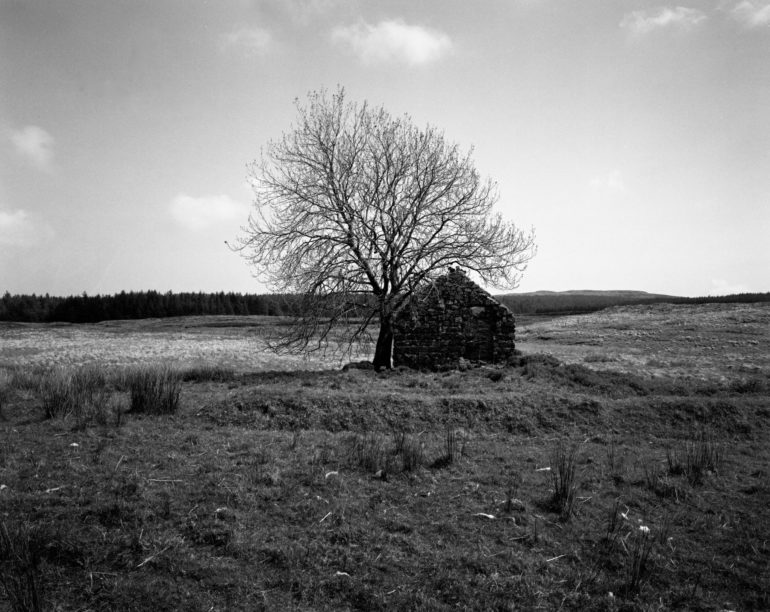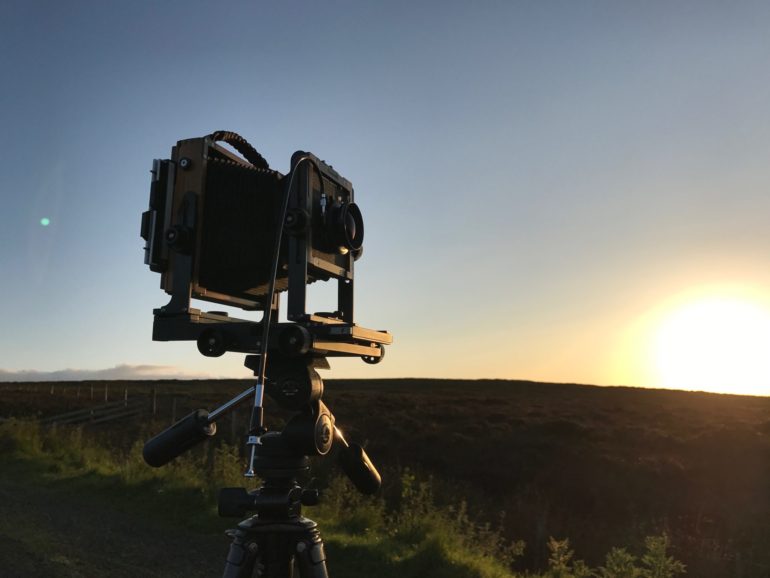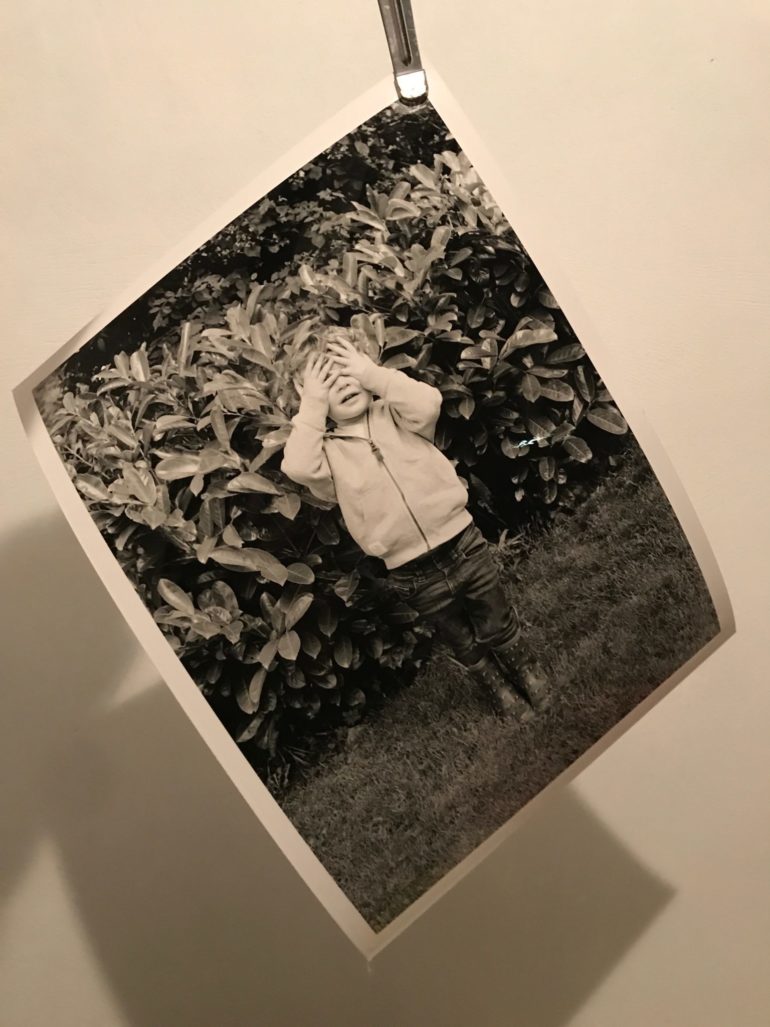Last Updated on 10/17/2017 by Chris Gampat
After shooting 35mm for a number of years I was intrigued by the higher resolution, and richer images produced by medium format cameras. I was a sucker for that ratio you get from a 6×7 negative too, but after seeing Joel Meyerowitz’ book Between the Dog and Wolf, my intrigue in larger formats began to build. “Why go medium when you can go large,” I thought? So I took the plunge, started researching eBay and the Large Format Photography forum (a great resource), and managed to find a kit for sale.
Be sure to follow James Moreton on Instagram
I bought a Nagaoka Seisakusho Ultralight 4×5 camera, Schneider 150mm lens, film holders and a dark cloth as a kit – result! Even with a relatively cheap camera find on eBay, the amount of accessories you need does add up quite quickly. For example the going price of film holders is about £15 each (and you need to be careful, I have bought holders that leak light, so are useless). A film holder stores two sheets of film, so you can imagine you need a few in your kit bag. You need a stable tripod – I have an old Giottos that I got a few years ago for about 100 quid (I think) which does the job perfectly well even if it is a little heavy to lug up hills. To shoot properly you need a decent light meter and you need a focus finder. So it does add up (but the inherent geek in you will love that kind of thing surely?).
Once I had my kit and shot it for a summer, I was bitten by the LF bug. I loved it. So started researching for a ‘life-long’ LF camera with all the features I wanted (the Nagoaka was a great camera and one of the lightest field cameras every made, but it just felt a bit flimsy, especially with my huge 210mm lens on it). There are a small band of producers who still make LF cameras; Shen Hao, Chamonix and newer companies like Intrepid and Gibellini. In the end I went for a Chamonix O45H1 as it allowed me to store the lens attached to the camera in the bag which greatly sped up the set up time. It is beautifully made and has all the movements and bellows extensions I needed. A camera for life.
Technique, mindset and the way you shoot with Large Format is very different to 35mm. When shooting with my Leica or Contax I might take multiple frames of the same scene – sometimes a whole roll (and some photographers take way more – Charlie Kirk for example took 72 frames – on film – to nail one shot). With 4×5 (and bigger) you need to slow down – find the shot you want and visualise it first, I can sometimes look at a scene for a solid 20 minutes before deciding to get the camera out, longer if I am waiting for decent light or a break in the rain. Then the camera comes out of the bag and gets set up (which can take some time btw – especially if you’re rushing to make use of fading autumnal light). I have shot with a manual 35mm for years now and all my cameras have in-built meters. I meter for the detail I want in the shadow, check the reading in the camera and shoot – I have gotten to the stage now where I can pretty much guess the exposure I need based on the conditions. However with LF there are other factors you need to take into consideration – bellows compensation for example. Closer focusing on longer lenses requires the photographer to rack out the camera – the lens is further from the film, hence you need to add more exposure compensation. Shooting wide angle, the lens is very close the film plane, so you need to compensate by lowering exposure values. So quick calculations must be made – not easy when you’ve stopped someone for a portrait and they are patiently waiting!
Another consideration is the image on the ground glass appears upside down, which is something you need to get used to – I have found it has greatly improved my approach to composition, instead of looking at the subject matter I am evaluating the scene in a more abstract way, which helps. Although this sounds complicated, shooting with my trusty Ilford Hp5 I have not experienced any issues (the film is so flexible and it can handle many mistakes). That said, shooting LF is a joy. The contemplative, deliberate and slow nature of the medium is really appealing to me. There is a certain amount of satisfaction to using such a manual, traditional, simple device in this highly computerised world we live in.
When suggesting I write this article, Chris asked what goes through my mind when shooting LF and how does it affect my creative vision. The answer is completely different to shooting 35mm – which in my mind is a lot more reactionary to what is going on in front of you. LF is a much more considered medium. I might plan shots in my head or scout out locations in advance and go back days later when the light is good (and the rain has stopped). The pictures are different too, they are more static, less fluid – Alec Soth once described LF images (with respect to sequencing a book) as hits from a huge bass drum; each shot carries weight and power – and I agree with him. The detail in the negative is incredible; and the prints – a straight print with no manipulation looks stunning immediately, the amount of work that needs to happen in the darkroom is greatly reduced as the negative seems to shoulder the burden.
The detail, grain, texture and feel are completely different to 35mm. There is a clarity in the images which I have not seen from anything else. With the advent of new LF companies like Intrepid – who are working hard to bring affordable, quality cameras to the market, then everyone interested in having a dabble with amazing medium should be able to. My LF shooting experience has affected me to such an extent that I am currently working on a complete project, which I will hopefully turn into a book at some point, all shot in the hills where I live.
This is an original piece done by James Moreton for the Phoblographer.





